Christiaan Van Der Klaauw Planetarium Eise Eisinga: Taking The Solar System From The Ceiling And Putting It On Your Wrist
by Martin Green
Sometimes you find unique things in the last places you’d expect. If you walk along the canals of the Dutch city of Franeker in the northern province of Friesland, you pass a charming house similar, at least from the outside, to all of the other lovely homes in the old city center.

Eise Eisinga’s house in Franeker, the Netherlands
The inside however is an entirely different story: number 3 on the street that now bears his name was once the home of Eise Eisinga. Born in 1744, he was a wool carder by trade, but passed his free time with a deep passion for astronomy and mathematics.
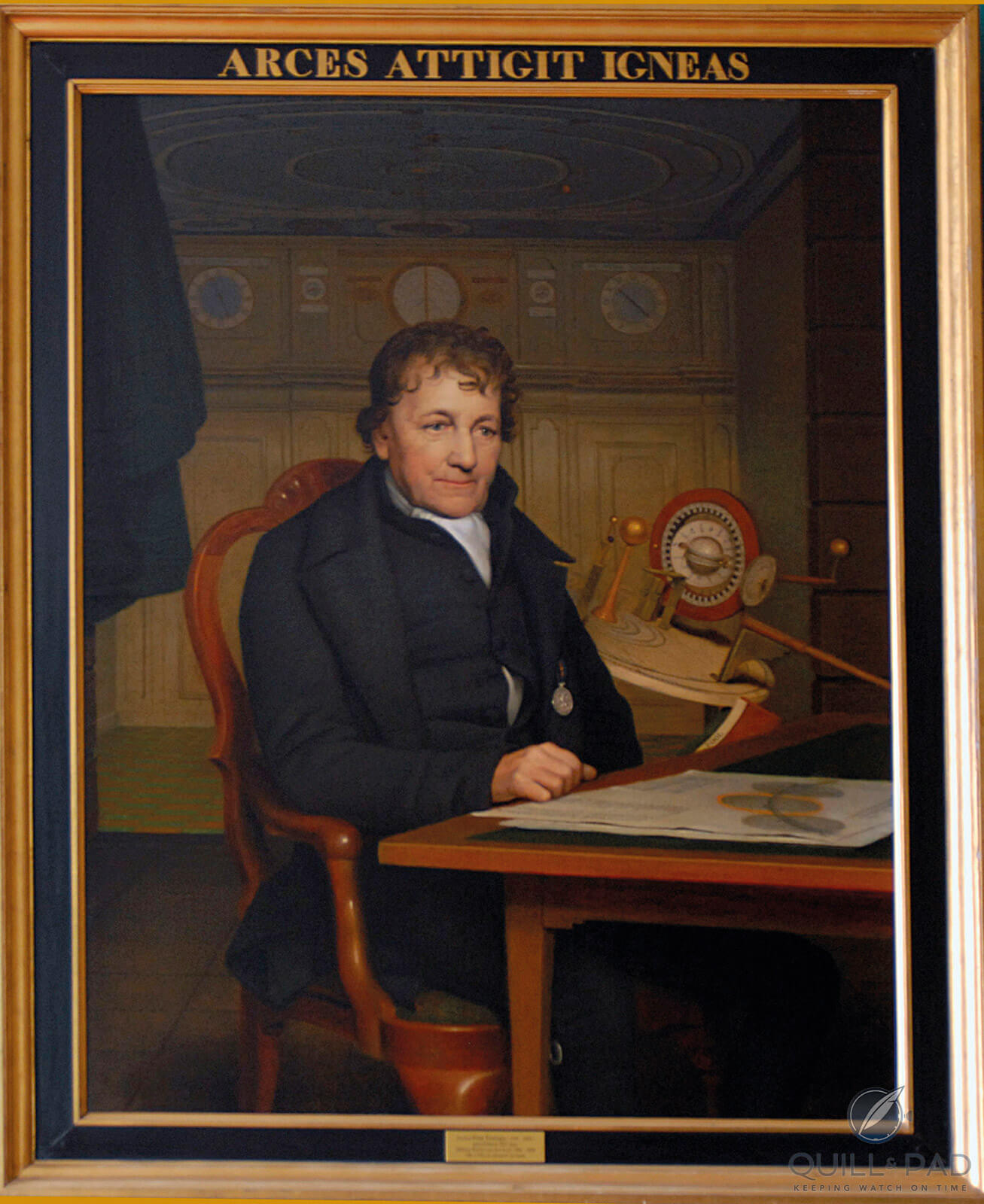
Eise Eisinga
So when a local reverend published an article in the newspaper declaring the end of time, it attracted Eisinga’s attention. On May 8, 1774, Mercury, Venus, Mars, Jupiter, and the moon formed an astronomical conjunction, which caused the reverend to declare that the combined gravitational forces of these planets would knock the earth out of its orbit and be burned up by the sun. Eisinga knew this was nonsense and set out to educate people about the planets of our solar system and their orbits around the sun.
The solar system on the ceiling
Eisinga’s approach at the time was groundbreaking: he built an orrery of our solar system on the ceiling of his living room. Eisinga married Pietje Jacobs in 1768, and we must give her some credit for putting up with this as it took him seven years to turn his vision into a reality.
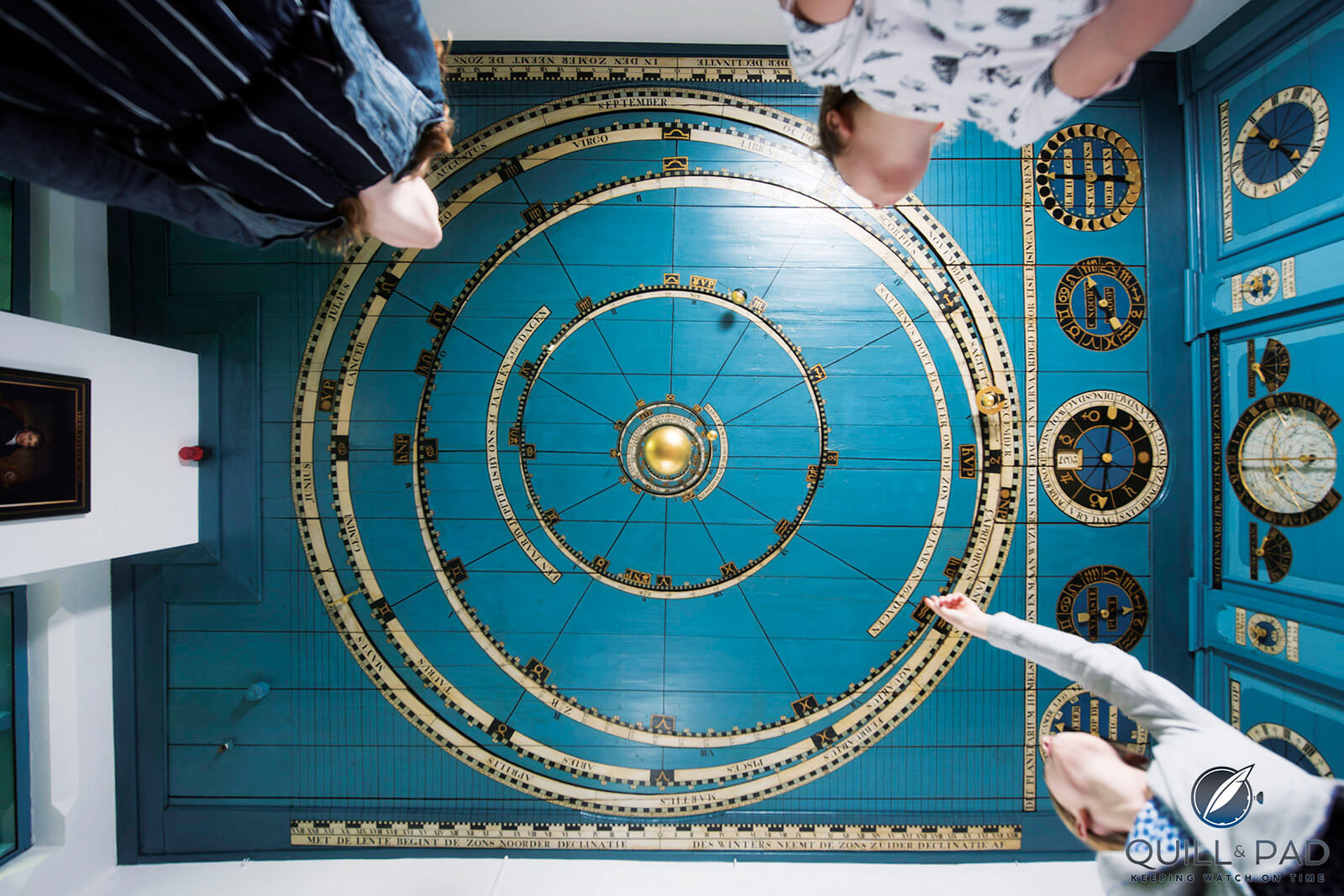
Eise Eisinga’s planetarium on the ceiling of his home in Franeker, the Netherlands
By 1781, the paths of the six planets of our solar system could be followed in real time in his home. This is the oldest still fully functioning planetarium in the world. In essence, Eisinga’s planetarium is a giant clock powered by weights. A complex system of gears ensures that each of the planets moves at its correct speed. A true visionary, Eisinga even wrote a manual on how to keep his planetarium running after he was gone – although he might not have suspected that this manual would still be in use in the twenty-first century.
Perhaps most charming were Eisinga’s instructions regarding the year indication, which only contained 22 years. After these pass, the board needs to be taken off, sanded, and repainted with the next 22 years. After which it can be reset to the start.
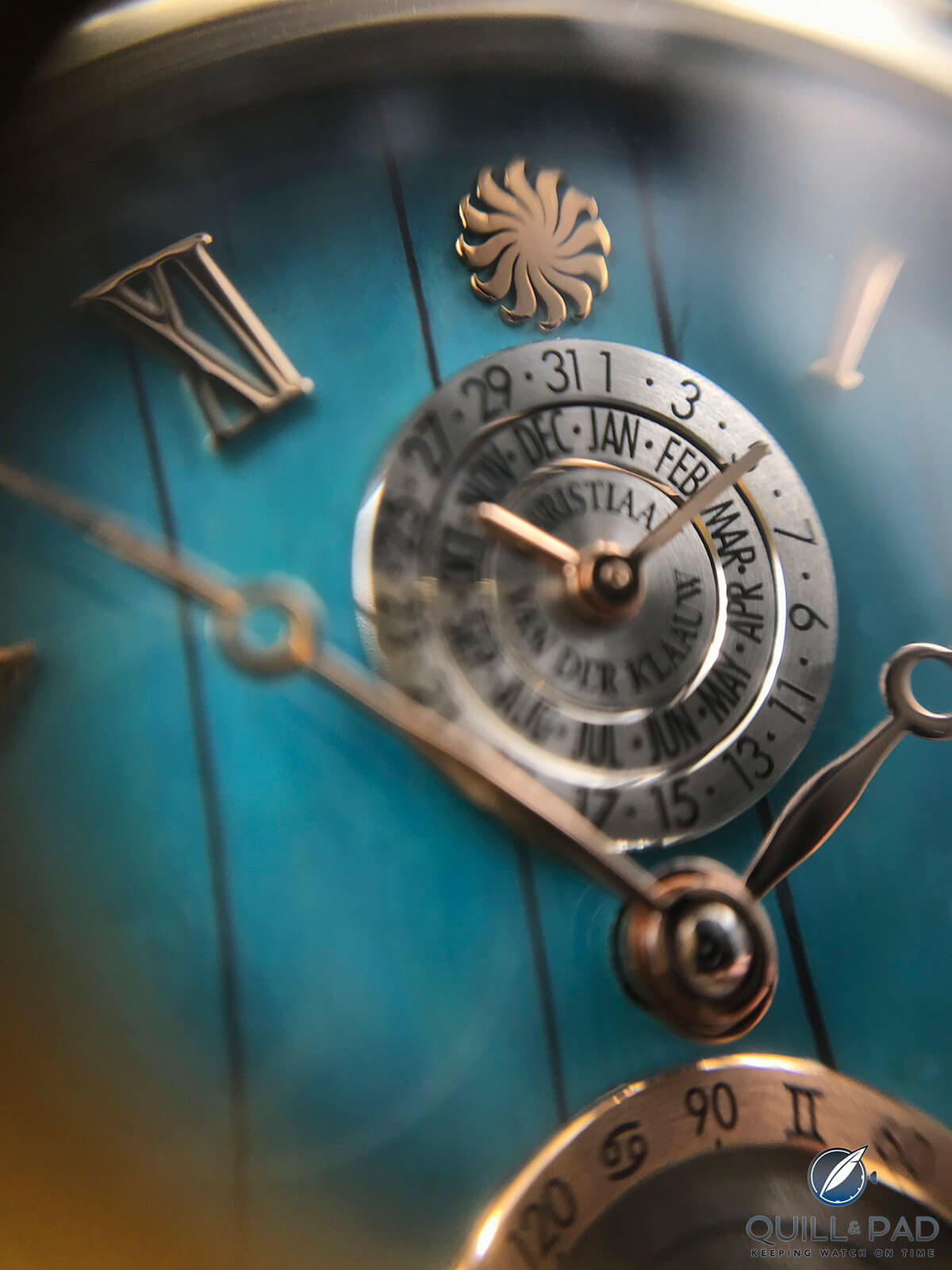
The calendar subdial of Christiaan van der Klaauw’s Planetarium Eise Eisinga
From the oldest planetarium to the smallest
Eisinga’s passion for astronomy is shared by Christiaan van der Klaauw, who in 1989 became a member of the AHCI. In 1979, van der Klaauw opened his workshop for astronomical clocks and watches in the city of Joure, not far from Eisinga’s planetarium in Franeker. Coincidentally, this workshop was also in his home.
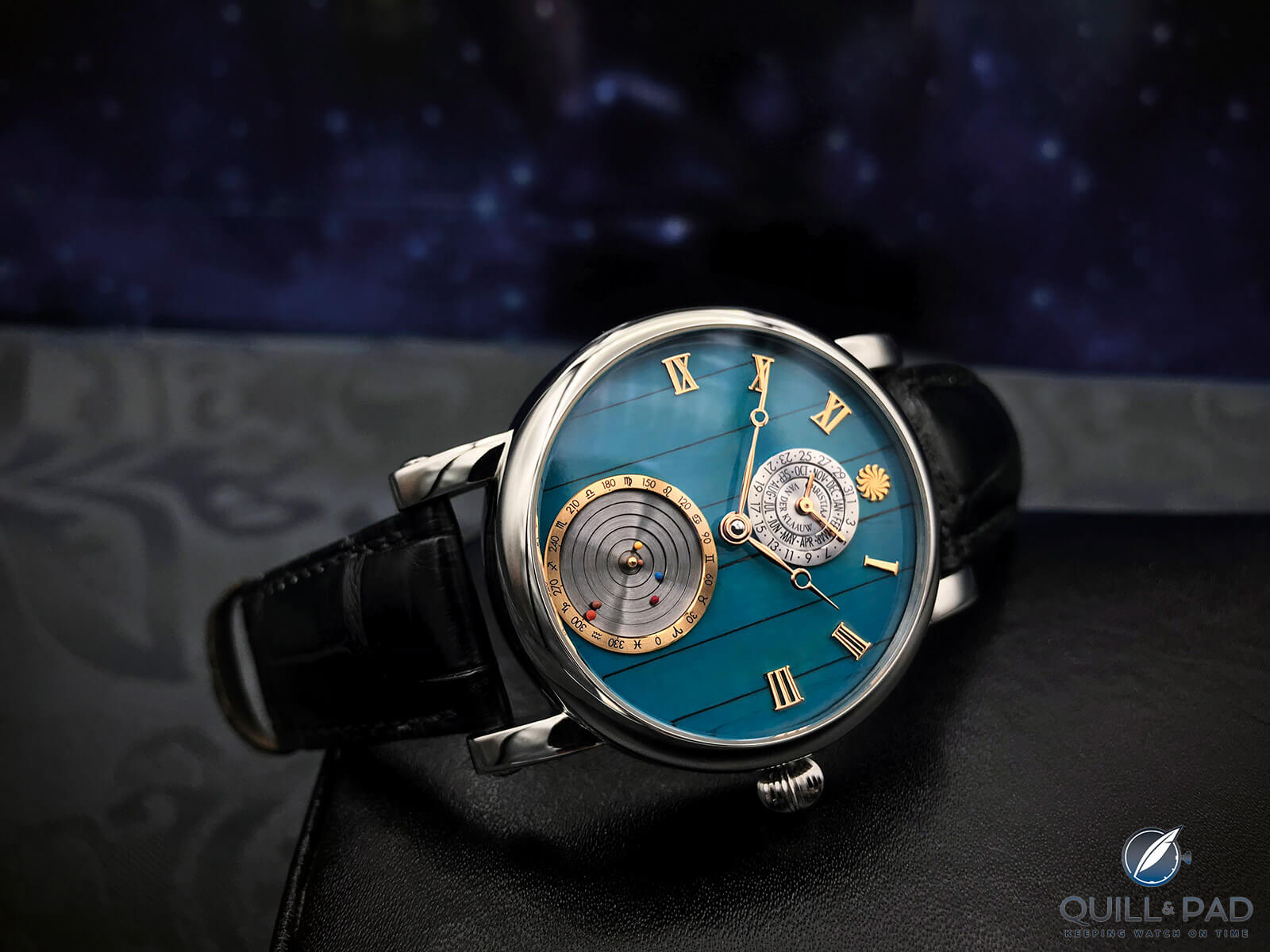
Christiaan van der Klaauw Planetarium Eise Eisinga in stainless steel
Van der Klaauw quickly made a name for himself, creating the most fabulous astronomical clocks, but he also had a passion for miniaturizing these complications to fit into a wristwatch. In 2009 he presented the world’s smallest mechanical planetarium to the world in a wristwatch that has been in the van der Klaauw collection ever since.
With the Eise Eisinga edition, the company merges the stories of the world’s oldest with that of the smallest planetarium in a brilliant way. The dial now resembles the Tiffany-blue wooden slats of the ceiling of Eisinga’s living room.
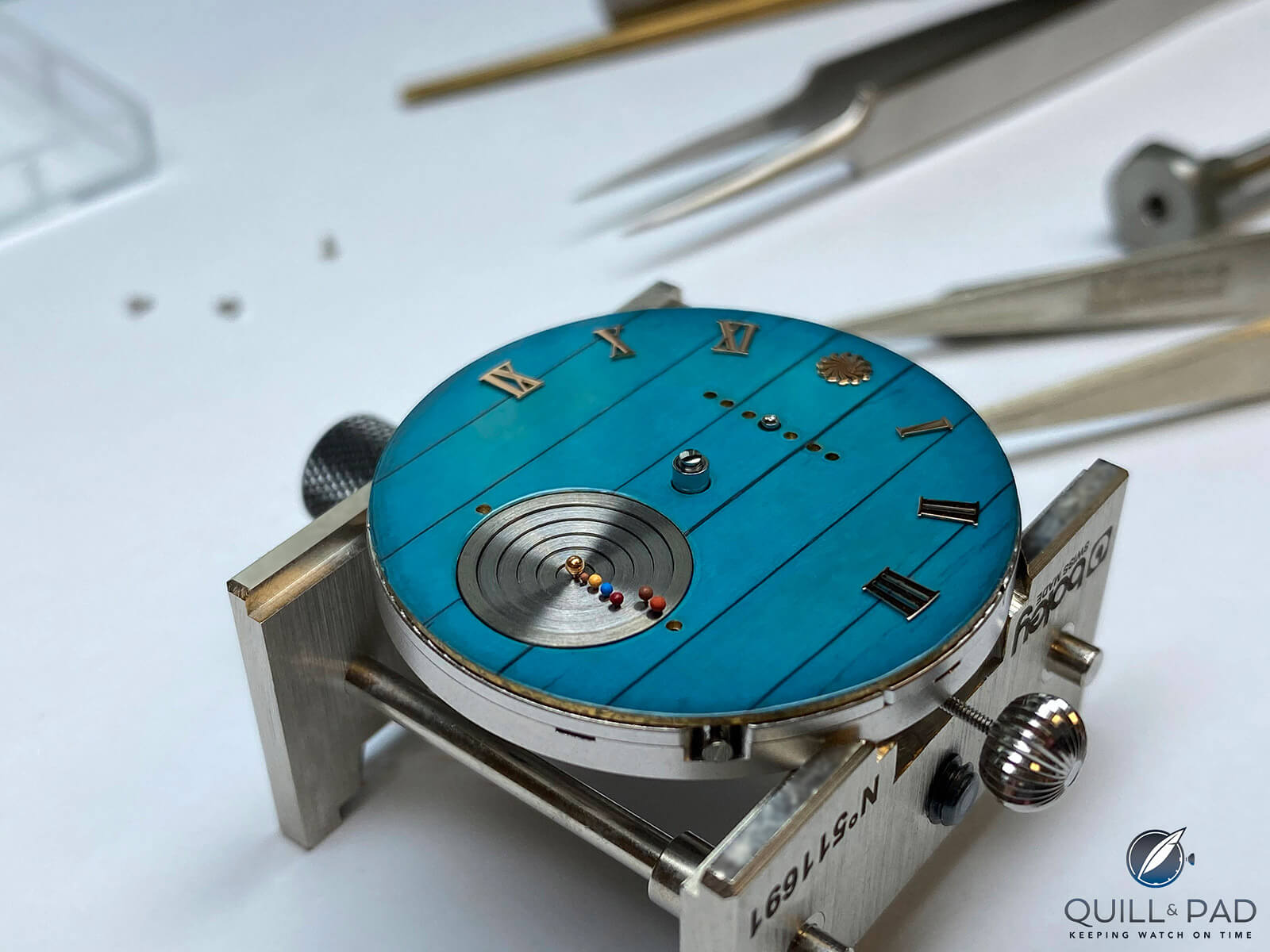
Uncased Christiaan van der Klaauw Planetarium Eise Eisinga
Its realistic appearance is a masterpiece created by artist Gaël Colon, who used oil paint to recreate the look of the aqua-colored wooden boards. While the van der Klaauw Planetarium is an exciting timepiece, it achieves correctness in its displays mainly by showing little motion.
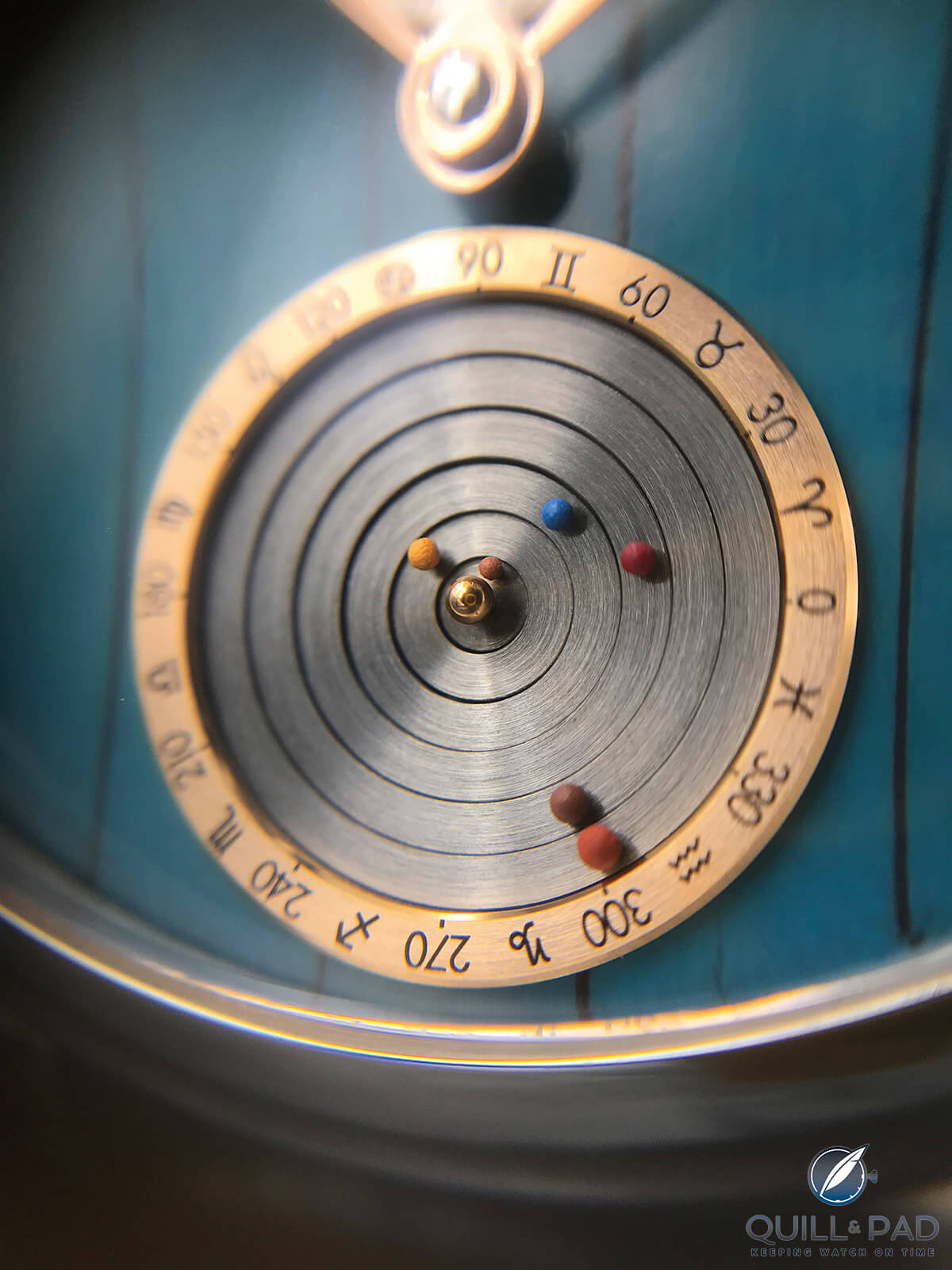
The planetarium portion of Christiaan van der Klaauw’s Planetarium Eise Eisinga
The fastest-moving planet is Mercury, taking just 87.97 days to make a full rotation around the sun; Saturn, the slowest, needs 29.46 years to do the same. This ensures that the van der Klaauw Planetarium is a watch with an ever-changing “face.” And without a frantic second hand, it emits the same peaceful aura as the original Eisinga Planetarium.
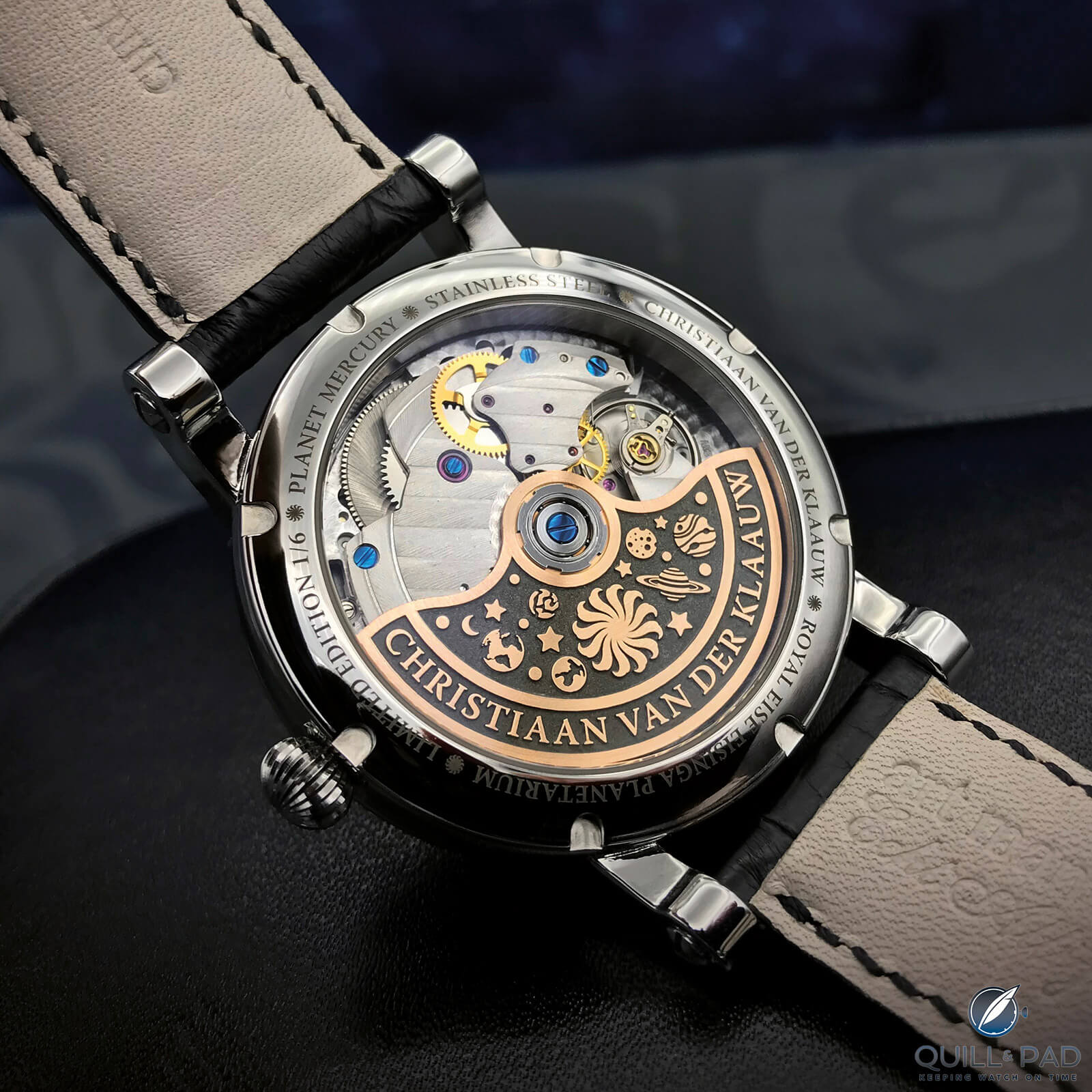
Back of the Christiaan van der Klaauw Planetarium Eise Eisinga
I appreciate two things in particular about the Planetarium that are not specific to just this van der Klaauw model: the 40 mm case and the 96-hour power reserve. Especially with a complication like this, such a long power reserve is essential, which the watch gets from twin mainspring barrels.
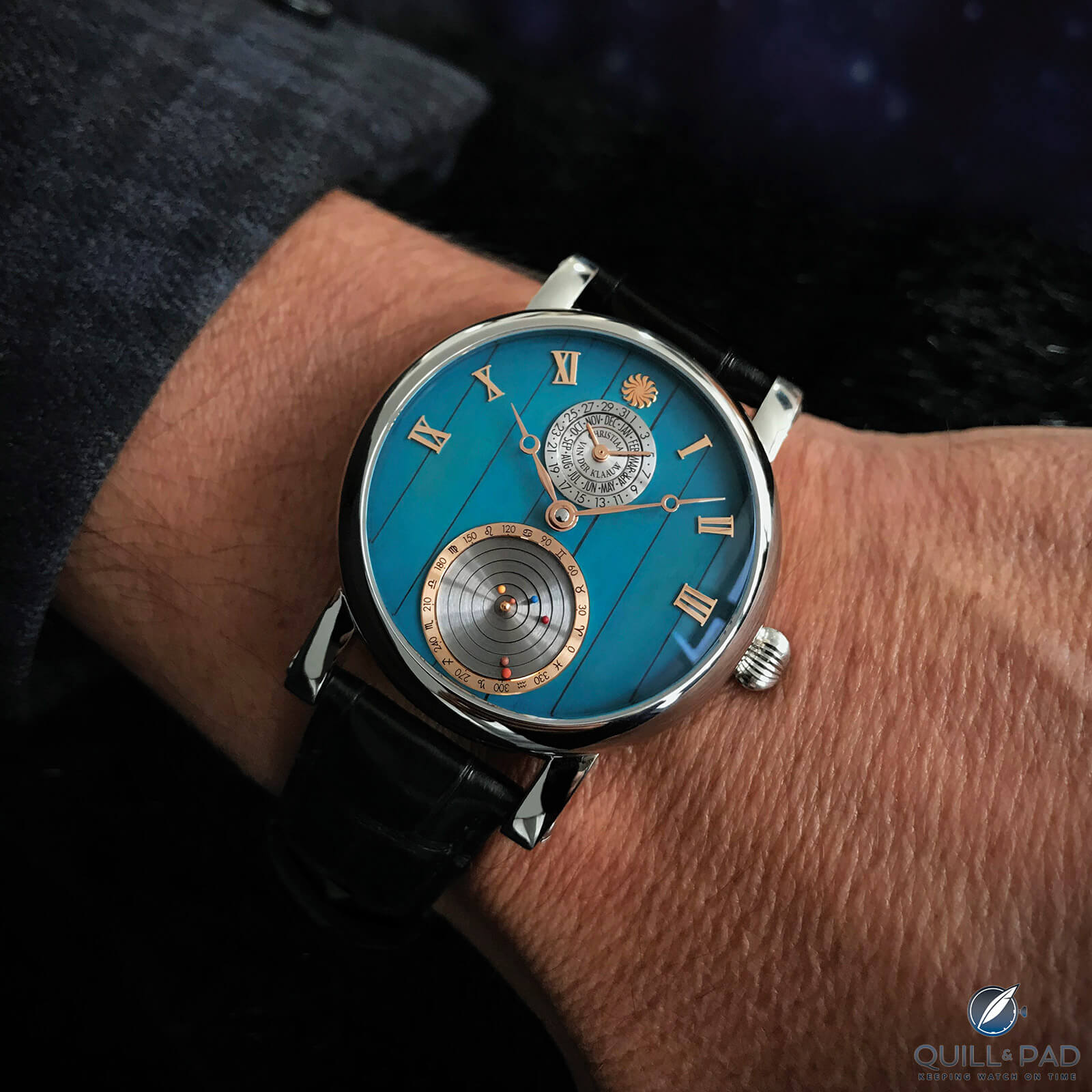
Christiaan van der Klaauw Planetarium Eise Eisinga on the wrist
In my opinion, the 40 mm case is the perfect balance between a modern-sized watch and showcasing the world’s smallest mechanical planetarium. There’s no sense in having the world’s smallest planetarium in an overly large case, nor in it being too small to fully appreciate.
Van der Klaauw will make six watches of the Eise Eisinga edition in a stainless steel case and six in a pink gold case. Each case will be engraved with the name of one of six planets.
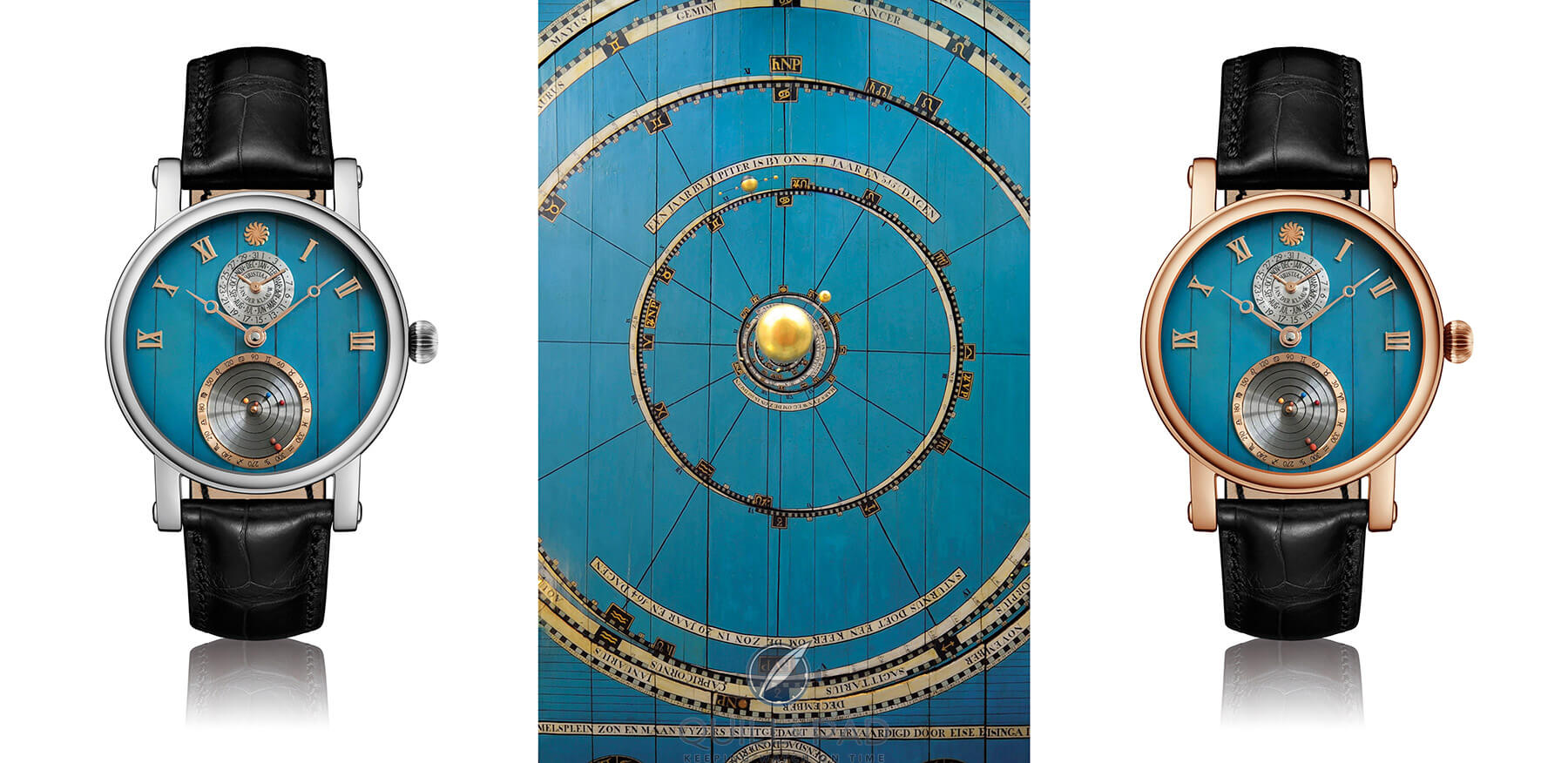
Christiaan van der Klaauw Planetarium Eise Eisinga in steel (left) and pink gold flanking Eisinga’s ceiling orrery
Are two limited editions of six watches enough?
For close to two decades, I have been a crusader against the “lazy limited edition,” in which brands ask considerable premiums for just a different (color) dial. I am now faced with a dilemma, as, truthfully speaking, these van der Klaauw limited editions are just that.
However, I think that the strength of this watch is that Daniël and Maria Reintjes, the successors of Christiaan van der Klaauw, left it at just that, making this timepiece a powerful statement that doesn’t try to be quirky yet still has a visually compelling connection to Eisinga’s Planetarium.
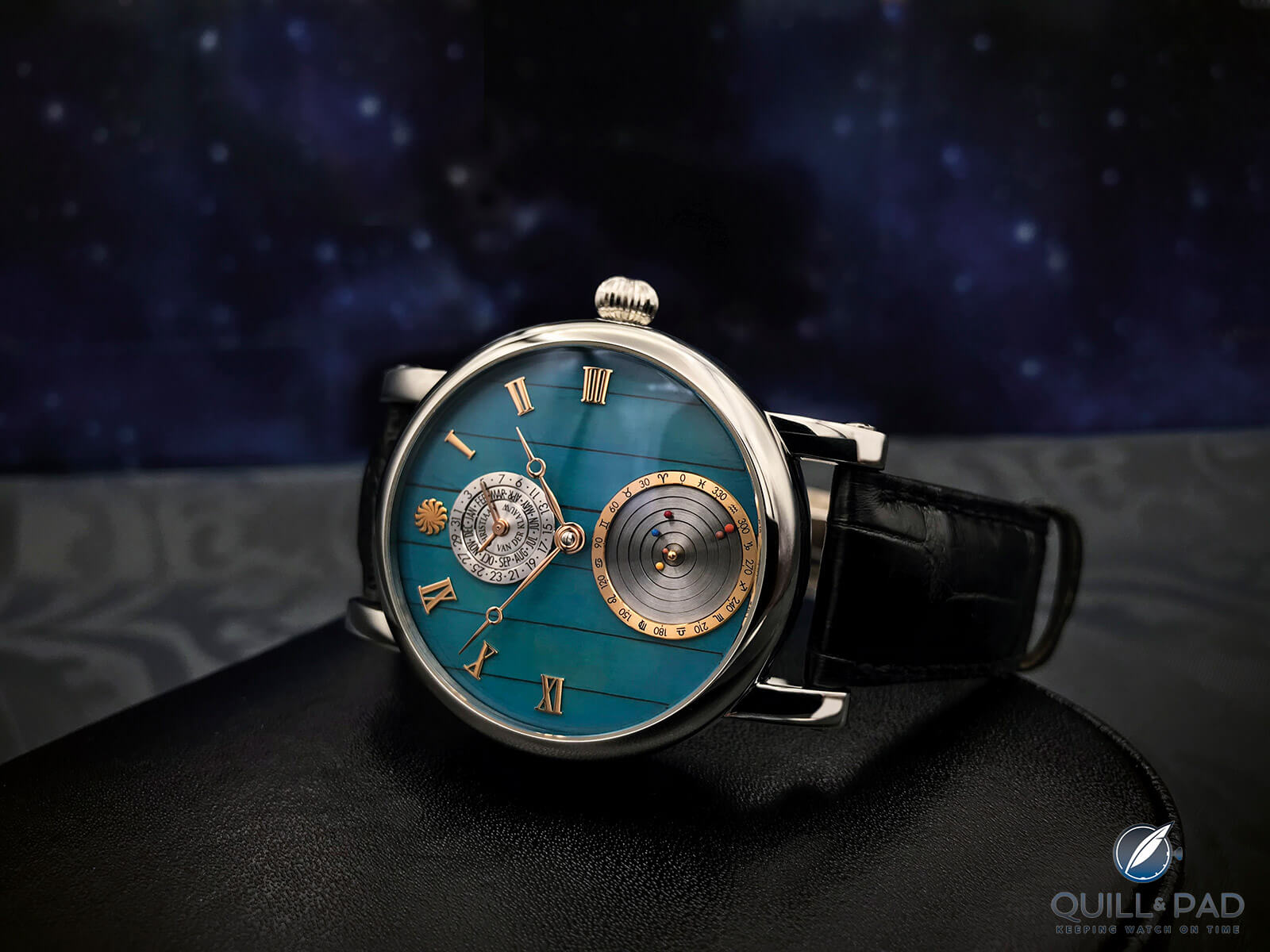
Christiaan van der Klaauw Planetarium Eise Eisinga in stainless steel
The fact that each dial is individually painted by hand elevates the watch as well. It is only €450 more expensive than the equivalent watches featuring aventurine dials, making the price difference marginal. This makes me comfortable to say that I’m happy to treat these van der Klaauw limited editions as an exception to my rule.
For more information, please visit www.klaauw.com/eng/cvdk-planetarium.
Quick Facts Christiaan Van Der Klaauw Planetarium Eise Eisinga Limited Edition
Case: 40 mm, stainless steel or pink gold
Dial: miniature oil painting of the ceiling of the Royal Eise Eisinga Planetarium
Movement: automatic Caliber CVDK7386, twin spring barrels, 96-hour power reserve, 4 Hz/28,800 vph frequency
Functions: hours, minutes; date, month; world smallest mechanical planetarium with seven planets
Limitation: 6 pieces in each case metal, individually engraved with the name of one of six planets
Price: €43,950 (stainless steel), €58,450 (pink gold)
You may also enjoy:
Christiaan Van Der Klaauw Planetarium Black Aventurine: Enigmatic Material Exposed
Visiting Christiaan Van Der Klaauw: To The Moon And Back!
Christiaan Van Der Klaauw Real Moon Joure Horizon: An Imagined Horizon
Astronomical Design: Talking To Daniel Reintjes, CEO Of Christiaan Van Der Klaauw
Leave a Reply
Want to join the discussion?Feel free to contribute!



I was thinking of adding a vintage moon phase watch to my collection, but now I have seen this…
One of the things that impressed me about the Apple Watch when it first came out out was that in addition to a chronograph, it featured a dial option with a fully functional orrery not unlike like this one. For the moment I’ll have to settle for that.
This model is really something, isn’t it? I love it, especially the dial color. And now I’m just itching to visit that house…
A spectacular watch and, along with the Astrolabium of about 12 (?) years ago, a personal favourite.
Never one to be fast out of the blocks, I’ve just got round to enquiring about it and was advised that the steel version is sold out (although there’s one floating about on a sales platform out there).
Any long-arc calendar on the wrist that measures intervals of time for more than a year is special in a time when we’re drowned by frivolous ephemera. One that visually traces the orbit of a celestial body that takes more than 29 years to complete is something else altogether. These watches connect us to ancient traditions of profound understanding of – and intimate connection with – heavenly order.
This is not just rare work. It’s precious in a most intangible way.